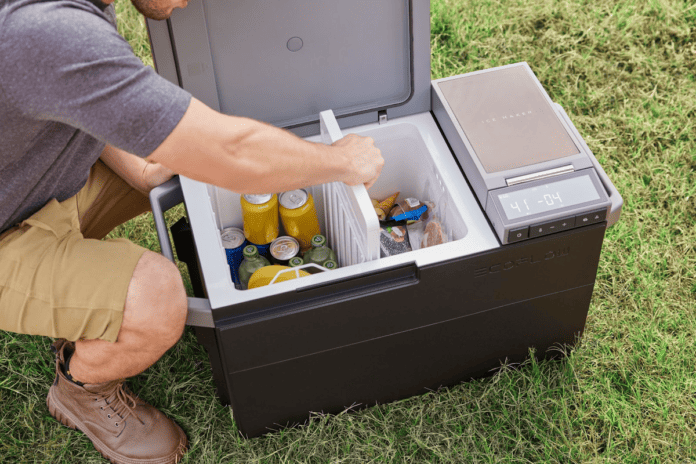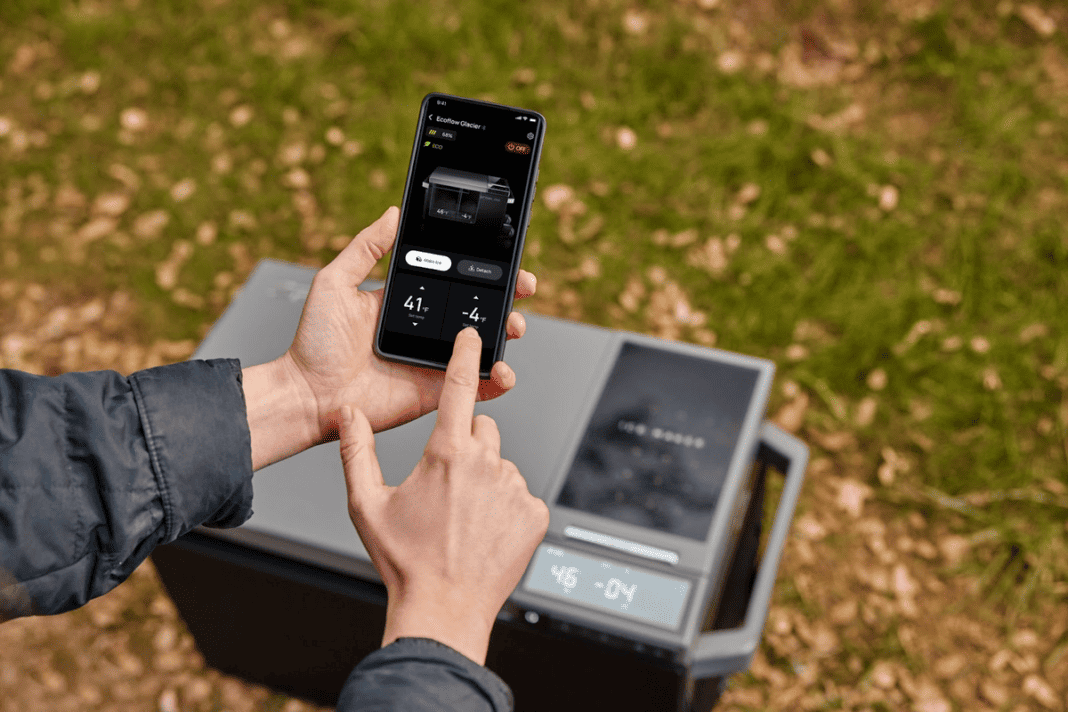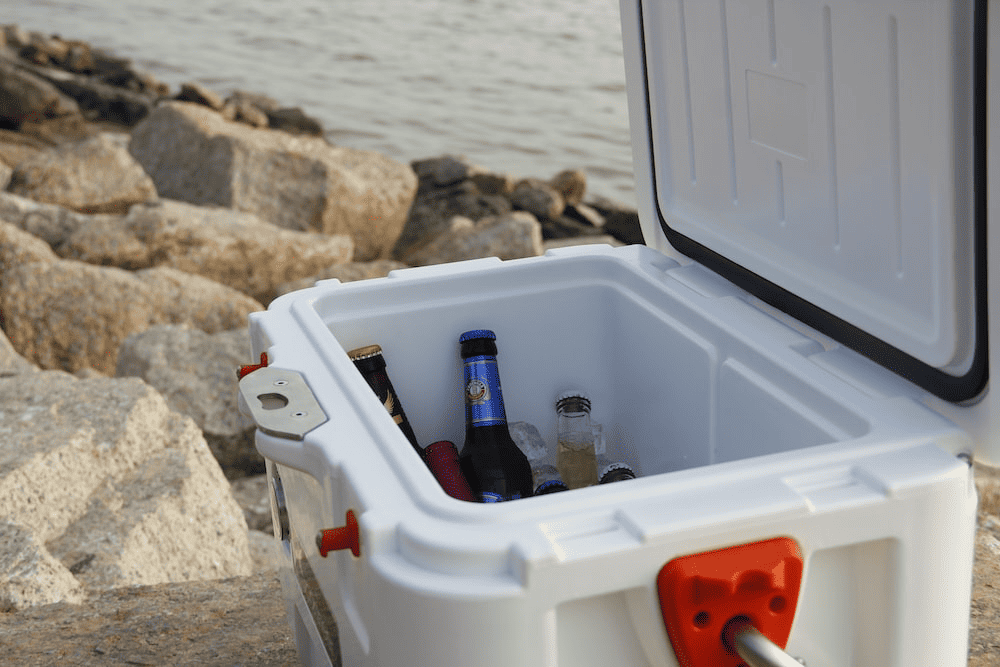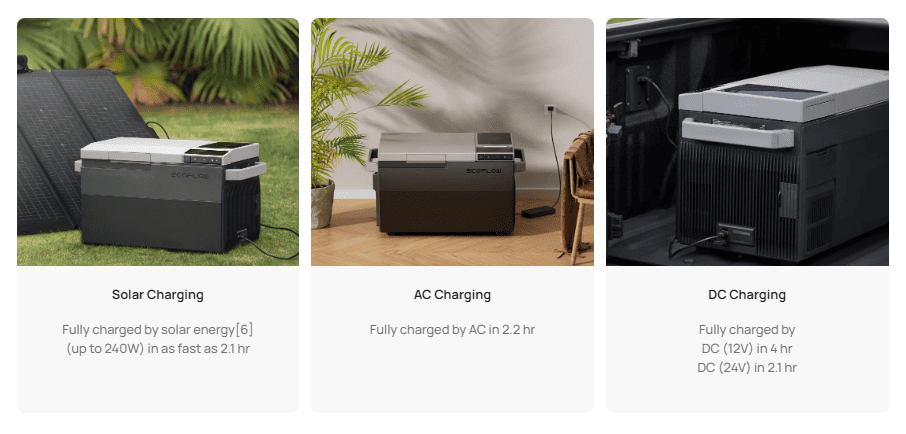Table of Contents
Portable refrigerators and freezers keep your beverages and food cold so that you can enjoy a summer camping trip or stock supplies in an RV or off-grid home. More than just keeping your drinks cold, the right portable fridge ensures food safety — even for fresh meat and dairy products.
If you need a portable refrigerator/freezer, there are many things you need to consider before making your purchase. Factors like temperature range, energy efficiency, and power requirements are crucial to consider.
Here’s everything you need to take into account when shopping for a portable refrigerator and/or freezer to find the best model for your needs!

What Is a Portable Refrigerator?
No doubt you’re familiar with traditional camping coolers — those plastic chests that use insulation and freezer packs or ice to keep their contents cold.
Portable refrigerators also keep their contents cold, but they have numerous advantages over traditional coolers.
The most reliable and robust portable fridges use a power source, a compressor, and other components to ensure the internal temperature remains consistent (and food-safe).
With a compressor-based portable refrigerator and freezer, you can keep beverages and foods consistently cold for extended periods — no matter where you are. They’re ideal for camping, RVing, and living off-grid.
Different Types of Portable Refrigerators
Various appliances call themselves “portable refrigerators,” but many are just glorified coolers.
There are basically two categories of true portable fridges: compressor-based and thermoelectric refrigeration. Absorption refrigerators are a third, less common type, but typically aren’t as mobile.
Standard compressor refrigerators — like the ones found in most households — use refrigerants that, when transformed from a liquid to a gas, absorb heat and lower the temperature of the fridge interior.
The compressor applies pressure to the gas to turn it back into liquid, releasing the heat. A thermostat in the refrigerator cycles the compressor on and off to sustain the cooling process.
Thermoelectric refrigerators, also called thermoelectric coolers, work differently. They use electricity to create a thermoelectric field between two ceramic plates. They don’t use refrigerants but solid-state cooling to produce cold air.
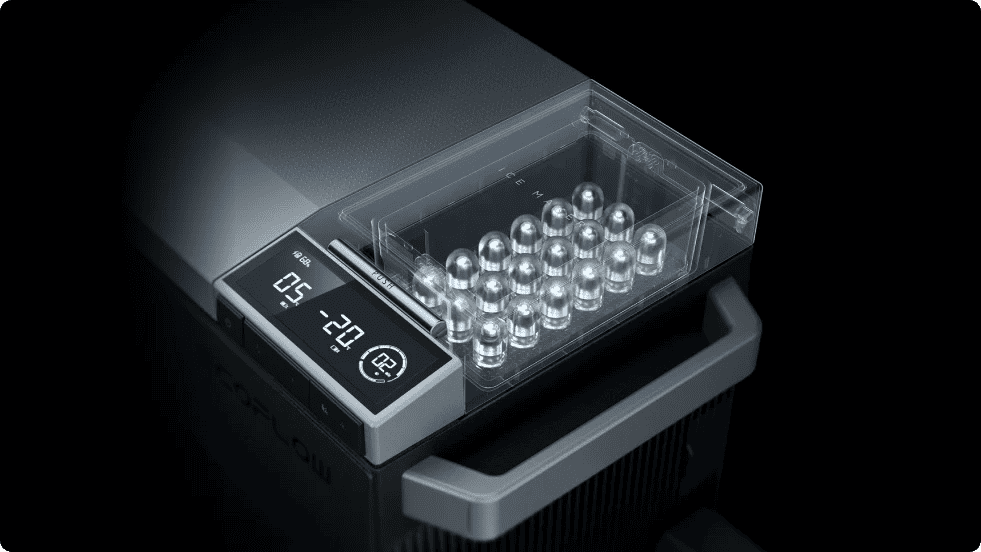
How Does a Portable Fridge Work?
How a portable fridge works depends on the type in question.
Portable compression fridges are similar to the technology used in your typical home refrigerator or heat pump.
Thermoelectric portable fridges, on the other hand, use solid-state heat pumps to move heat in and out of the insulated interior. They don’t require a compressor and don’t use refrigerant gases, which is why some refer to these as “coolers” rather than true refrigerators.
What’s the Efficiency of Portable Refrigerators?
Portable compressors refrigerators cycle off and on as needed to regulate their interior temperature. They will need to run more frequently in hotter environments than in cold ones.
For this reason, electricity consumption varies, but most consume less than 1-3 amps/hr if used as a fridge (rather than a freezer). A thermoelectric cooler typically consumes around 3-5 amps of power under similar conditions.
The EcoFlow GLACIER is an energy-efficient portable refrigerator. It’s also a freezer and features an integrated ice maker — an industry-first.
When set to ECO energy-saving mode, it uses less than 80 watts of electricity per hour (80Wh).
Energy-saving mode also offers a wider cooling range than other comparable portable refrigerators on the market, with temperatures from -13°F (-25°C) to 50°F (10°C).
Thanks to a powerful 120W compressor, the GLACIER also has highly efficient output, making ice cubes in 12 minutes and fast cooling from 86°F (30°C) to 32°F (0°C) in 15-20 minutes.
What Are the Differences Between Portable Refrigerators and Traditional Coolers?
Let’s cover some of the main relevant differences you need to consider if you are trying to decide between a portable refrigerator and a cooler:
Compressor and Cooling Function
As mentioned above, portable refrigerators use a compressor to keep their contents cool.
A traditional cooler doesn’t have a compressor. Instead, it relies on insulation and ice to keep the contents cool. It doesn’t lower the temperature of your items but merely keeps them at a set temperature for a limited amount of time.
A cooler may be able to keep perishable items food-safe for a few hours, but any longer than that, and you’re risking your health (and your family’s).
Fridge and Freezer Settings
Most portable refrigerators include a thermostat for the fridge and freezer. They may be just one setting for both the refrigerator and freezer. Advanced portable fridges like the GLACIER have dual-storage compartments and a powerful 120W compressor to control cooling and freezing temperatures in both. The GLACIER also has an ice maker, making it the first portable fridge to offer refrigeration, freezing, and ice-making functions.
Thermostats are not an option with coolers. They can keep contents cool but not below freezing. They don’t function as freezers.
Temperature Control
A portable refrigerator allows you to set the temperature according to your needs. Temperature control lets you adjust not only based on the contents but also the climate (ambient temperature).
On sweltering days, you may need to lower the temperature to maintain food safety.
A cooler is even more subject to ambient temperature, and you have no option to control the internal temperature — other than adding more ice.
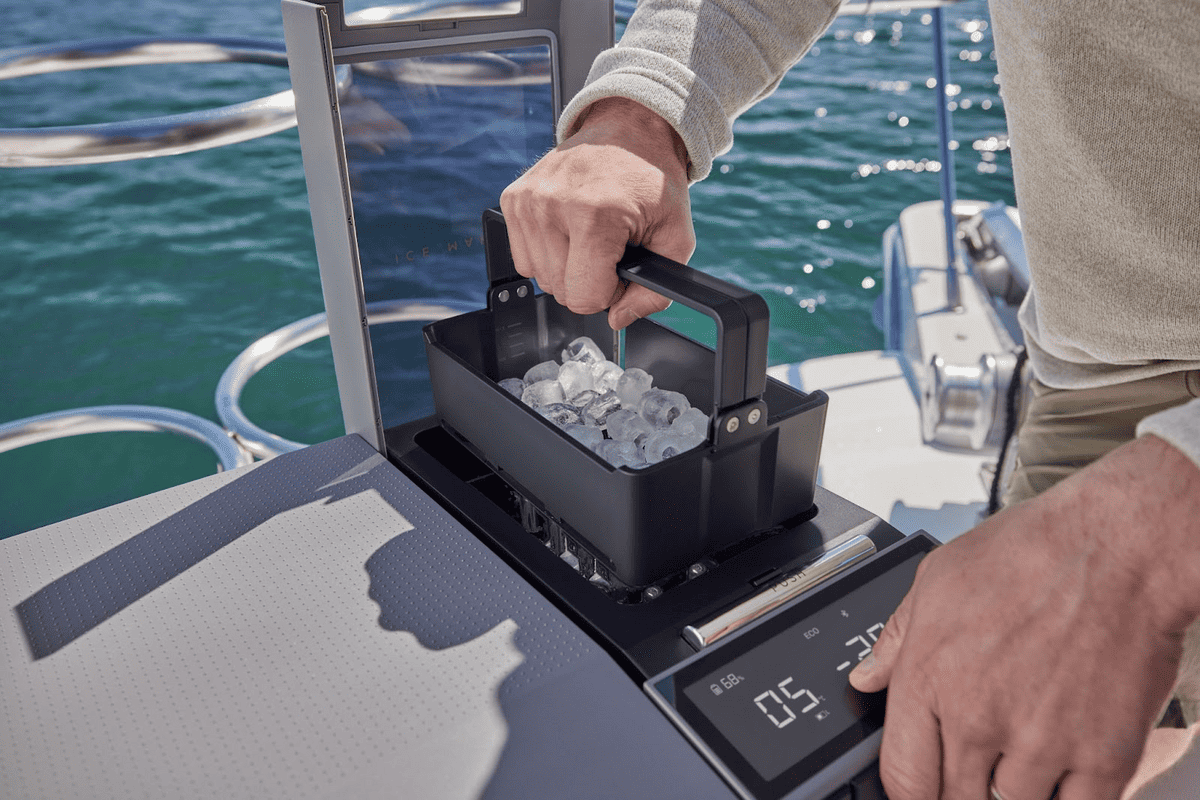
How to Choose a Suitable Portable Refrigerator
Portable refrigerators bring so many outdoor and travel activities to the next level. If you’re ready to purchase one, here are some things to keep in mind:
Storage Capacity
Different models will feature different storage capacities. You need to strike a balance between how much interior space you require for cooling and how much exterior space you have for your fridge.
If you’re looking for a portable fridge for your tiny home or RV where you live full-time, you’ll likely need a larger storage capacity than if you’ll primarily use the fridge for camping, tailgating, or road trips.
Size and Weight
Determine how much space you have for your portable refrigerator. Next, consider how much interior cooling space you need. Find a model that strikes a balance between the two.
Size and weight also affect portability. If you aren’t moving the fridge from place to place regularly, this may not be a concern.
However, if you’ll be transporting it to multiple locations frequently, be mindful of size and weight. You don’t want to break your back with your portable refrigerator.
Look for add-on features like a carrying handle or wheels to improve portability.
Power Source
Most portable refrigerators have DC and AC electricity adapters. Some have built-in batteries to run the compressor off-grid. Your power source and available charging methods (for battery-powered fridges) are essential to consider.
Especially if you plan on using the appliance in off-grid or remote locations without access to hookups or shore power.
Next-generation portable fridges may have direct solar charging capabilities too. EcoFlow’s GLACIER Portable offers 240W of direct solar input when you add the plug-in battery. It’s a perfect fit for the 220W Bifacial Portable Solar Panel. Fully charged, the plug-in battery offers up to 40 hours of wire-free cooling. With the added PV panel, GLACIER can recharge in just 2.1 hours, entirely off-grid.
You can get even longer runtimes from GLACIER if you pair it with a PPS, such as the DELTA 2 Portable Power Station w/220W solar panel.
Durability and Quality
All portable refrigerators aren’t made equal. Before investing in one of these devices, it’s essential to do your research. Are they made of quality materials, and do they have the durability you can rely on?
Manufacturing quality is a concern, not only to ensure you get the best value from your purchase. If you rely on a portable fridge for living in an off-grid home, you need a long-lasting solution that you can depend on.
Similarly, the stakes may be lower for a tailgate party vs. a week-long camping trip. Quality and durability may weigh differently vs. price in your calculation.
When weighing your options, look for rugged construction, operating angle of tilt, and the waterproof IP rating to help assess a product’s durability.
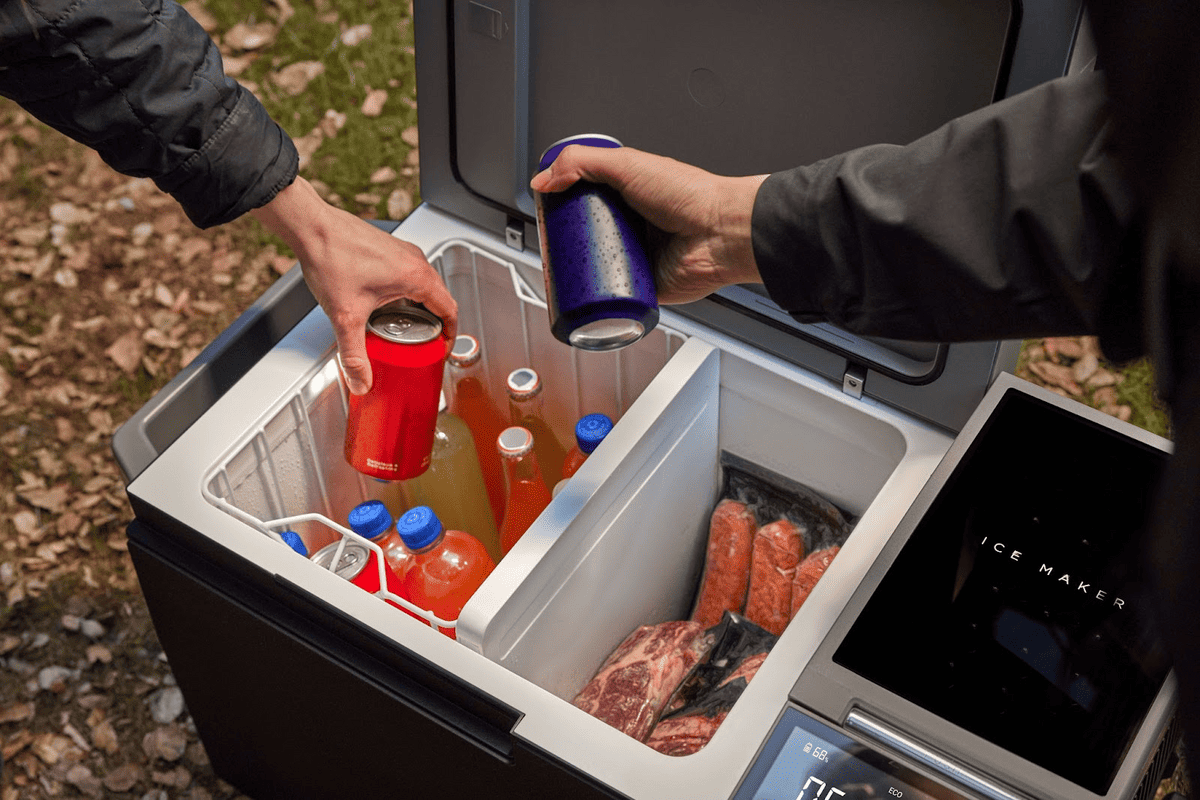
FAQs
How Long Do Portable Refrigerators Last?
In most cases, a portable refrigerator can last around 20 years. This might vary based on several factors, including maintenance, durability, and manufacturer quality. With a good unit and proper care, your portable refrigerator should keep things cool for years!
How Do You Charge Portable Refrigerators?
Portable refrigerators may have multiple charging options, including built-in or plug-in batteries, AC/DC power supply, and direct solar charging. Additional plug-in batteries can also help keep things cool for longer, so you don’t have to worry about charging as often!
How Should I Clean & Maintain a Portable Refrigerator?
Proper maintenance helps ensure the longevity of your portable refrigerator. Upkeep includes cleaning coils and the seals of your device. It’s essential to ensure that the seals of doors are functioning correctly to keep cold air in and prevent wasted energy and inconsistencies in temperature control.
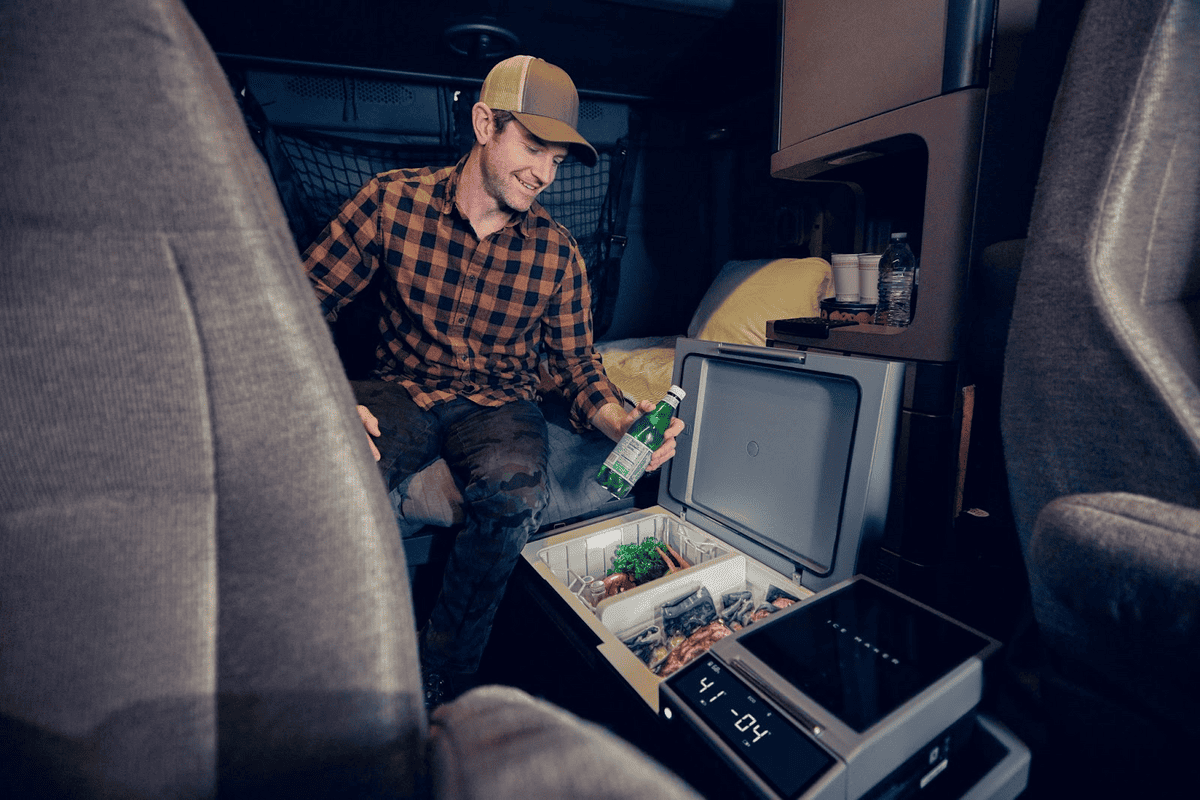
Final Thoughts
Whether you’re camping, glamping, boating, or transitioning to full-time RV life, a portable refrigerator/freezer is one of the most essential appliances you can invest in.
Why not consider what Popular Mechanics recently called the “Best Portable Appliance” for your off-grid refrigeration needs?
GLACIER is an eco-friendly option, and it’s the first-ever fridge freezer with an integrated ice maker.
With multiple charging options, including AC, DC, and direct solar, you can always find a way to keep things cool!
Check out EcoFlow today for other Smart Devices and off-grid power solutions.
